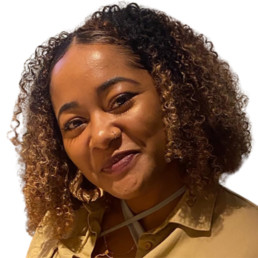
Written by Omena Osivwemu
Former Primary Teacher, Humanities Lead, Researcher. Author of 'Decolonising the Curriculum: A Comparative Case-Study of Black Learner and Educator Perspectives and Experience in London and Johannesburg' in The BERA Guide to Decolonising the Curriculum.
This question has played on my mind for a while; at a conference of educators reckoning with race, a Black senior leader who is also a parent asked “when is the right time to talk to my children about race?” This stuck with me and the academic on the panel looked to me, as an experienced Primary School teacher to respond.
Given my lived experience growing up Black in Northern England, training and teaching across the North and the Midlands, the answer seemed obvious to me.
In short- right away! As soon as children are absorbing language, learning values and copying behaviours.
As soon as we teach toddlers what is a boy and what is a girl, that is the social construction of gender- even if you opt for a more gender-neutral or fluid approach- that is still teaching them difference. When we teach children to share; be kind; tell the truth etc., all values we deem to be ‘right’, we should also be teaching them that sometimes not everyone will be kind, share or tell the truth. At times this can be due to our differences. But difference is a wonderful, necessary part of life!
Of course, discussions should be age-appropriate in language children understand and use. ‘Sulwe’ by Lupito Nyong’o is a beautiful book, aimed at young children and explores themes of ‘race’ and colourism. Now, there is a wonderful array of diverse books available for all ages! As children get older, we can then build on their racial literacy, empowering them to make some sense of the social construction that is ‘race’. For adults, I would recommend ‘How to raise an anti-racist’ by Ibram X. Kendi as a great place to start.
As soon as we read traditional tales to children, let them watch YouTube, TV or films, we are passing on messages about society, how people interact and what is deemed ‘right’ and ‘wrong’. When children can describe something as red, green, blue, black and white; they can and will use this language to describe differences between people. It may not be ‘accurate’ to the adult lens, for instance as a young child in a Black, mixed family, I would draw my father’s dark brown skin as purple and my mother’s very fair brown skin as pink.
One of my earliest memories as a 4 year old (contextualised by my mother’s memory) at a mostly White Nursery, was feeling different. Too brown, with hair that was too dark and curly, and eyes that were too dark, compared to the teachers, other children and most importantly the blonde, blue-eyed dolls which I adored! Then, when the teachers with good intentions, changed the play to ‘Curlilocks’ so that I could play the character Goldilocks, I knew I wasn’t ‘right’- I didn’t fit. If Black and brown children aren’t too young to experience or witness racialisation or racism, nobody else is too young to learn about ‘race’ and racism.
Later on during undergrad’, volunteering in local primary schools in Northern Lancashire, as soon as I walked into classrooms, children as young as 4 would stare wide-eyed and mutter under their breath “she’s Black!”. Throughout my teaching career across England and Spain, most times I was the only Black teacher children had seen. The responses have varied from positive, such as expressing their love for my curly hair, inquisitive questions and collaborative cultural exchange. To the negative, for example young children avoiding touching my skin when I gave them something, or 6 year olds ignoring me as though they didn’t understand my English, because as one boy put it, I was “from Africa”.
I recognise that in Black and brown majority spaces like London, experiences such as mine may be less common. However, if parents, the media, film, books etc. are socialising children as young as 3 and 4 to understand brown skin, or Blackness, or religious dress, or simply human difference such as accents, as ‘bad’ or negative, then we too should be equipping our children with the understanding that such a belief system (white supremacy) exists and continues to prevail- albeit gently. We should be uplifting Global Majority children to feel proud of their cultural and ethnic backgrounds, histories and identities. We should help children to contextualise what they are seeing and embolden them to have high self-esteem and confidence when facing barriers/ discrimination.
In the same way that we acknowledge teaching children ‘stranger danger’, online safety, how to respond to bullying, physical and mental wellbeing, and healthy relationships in order to protect them from harm and prepare them to safeguard themselves; we should also be empowering all children with the language and understanding to know when discrimination and racism are happening (unfairness / unkindness in children’s terms). In the same way that far-right rioters and sympathisers have taught their children, as we saw this summer, to attack, abuse and harass Black, brown, migrant, Muslim peoples; we too should be teaching our children from early why it is happening and how they can respond.

